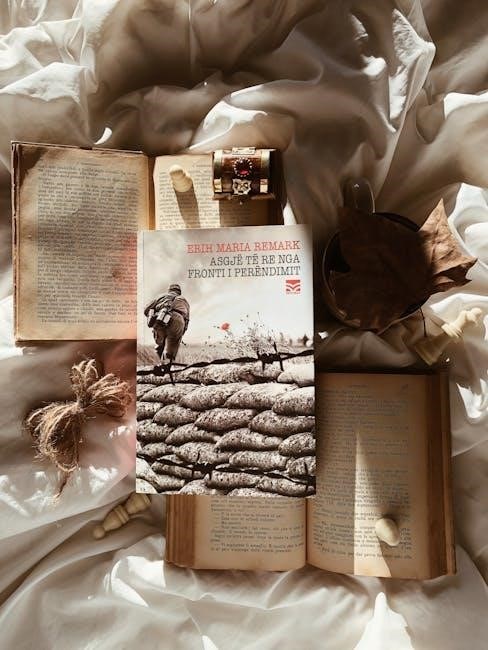How to Make a Tie Blanket: A Step-by-Step Guide
Learn to create a cozy tie blanket with easy steps! Cut two fleece pieces, remove selvage edges, and trim corners․ Cut 4-inch strips around edges, then tie knots securely․ Ensure not to tie too tightly for a flat finish․ Download the PDF guide for precise measurements and instructions․
Materials Needed for a Tie Blanket
To make a tie blanket, you’ll need the following materials:
- 2 pieces of fleece fabric: Choose your preferred size and colors․ Ideal dimensions are 60″ x 70″ for a standard blanket․
- Sharp scissors: Essential for cutting clean edges and strips․
- A long ruler or measuring tape: To ensure accurate cuts and measurements․
- Large safety pins: Helpful for aligning and holding the fleece layers in place․
- Cardboard or a cutting mat: Provides a sturdy surface for cutting․
Optional items include a rotary cutter for precise cuts and a PDF guide for step-by-step instructions․ Pre-wash the fleece to remove any finishing chemicals and ensure it’s soft and ready to work with․ Follow the PDF guide for precise measurements and materials list․ Having all materials ready ensures a smooth and enjoyable crafting experience․
Step-by-Step Instructions for Cutting Fleece
Start by preparing your fleece․ Lay the two pieces flat on a sturdy surface, such as a cutting mat or cardboard, ensuring they are perfectly aligned․ Use large safety pins to secure the layers together, preventing any movement during cutting․
First, remove the selvage edges from all four sides of both fleece pieces․ This step ensures the blanket lays flat and prevents curling․ Cut carefully along the edge, just beyond the selvage, using sharp scissors or a rotary cutter for precision․
Next, cut out 4×4 inch squares from each corner of the fleece․ This creates a smooth edge for tying and helps the blanket drape nicely․ Measure accurately to ensure all corners are uniform in size․
Now, cut 1-inch wide strips around all four sides of the fleece, spacing them evenly․ Make sure to cut through both layers simultaneously to maintain alignment․ Cut from the edge of the fleece to the edge of the corner squares, creating long, even strips for tying․
For a standard blanket, cut strips every 1 inch, ensuring they are consistent in width and spacing․ This uniformity will make the tying process easier and result in a professional finish․

Finally, double-check your cuts to ensure all strips are the same length and spacing․ This attention to detail will ensure your blanket is even and visually appealing when completed․ Follow the PDF guide for precise measurements and instructions․
How to Tie the Blanket: Basic Knots and Techniques

Start by taking one strip from the top layer of fleece and one from the bottom layer․ Bring them together in a square knot: right over left, then left over right․ Pull the knot gently to secure it, ensuring it’s not too tight to avoid puckering the blanket; Repeat this process for each pair of strips around the blanket․

For consistency, maintain even spacing between knots․ Use a ruler or measuring tape to ensure uniformity․ If a knot comes undone, simply untie it and re-tie following the same technique․
Work on a flat surface to keep the blanket aligned․ Consider using a PDF guide for precise instructions and diagrams․ Double-knotting can add extra security if desired․
Check the blanket’s size periodically to ensure it meets your comfort needs․ With patience and attention to detail, you’ll achieve a beautifully tied blanket․
Customizing Your Tie Blanket: Colors, Sizes, and Patterns
Customizing your tie blanket allows you to personalize it to suit any occasion or preference․ Start by choosing coordinating colors for the two fleece pieces—solid and patterned combinations work well․ For a unique look, add a third accent color for the ties․ Use a PDF guide for precise measurements․
Adjust the size based on its intended use: crib-sized (32×40 inches), lap blanket (30×40 inches), or queen-sized (60×80 inches)․ Use sharp scissors to cut strips evenly for a polished finish․ For patterns, try striped or checkerboard designs by alternating colors or layering fabrics creatively․
Experiment with fringe lengths by cutting shorter or longer strips․ Add embellishments like ribbons or appliques for extra flair․ Ensure patterns align when cutting strips from printed fleece․ This step enhances the blanket’s visual appeal․ With these tips, your tie blanket will be both functional and stylish!
Care and Maintenance Tips for Your Tie Blanket
To keep your tie blanket soft and durable, wash it in cold water using a gentle detergent․ Avoid fabric softeners, as they can reduce the fleece’s softness․ Gently agitate by hand or use a delicate cycle in a washing machine․ Do not soak the blanket for extended periods, as this may cause the knots to unravel․
Air dry the blanket by laying it flat on a clean surface, away from direct sunlight․ Avoid using a dryer, as heat can damage the fleece or tighten the knots excessively․ For best results, brush the blanket with a fabric brush to restore its texture and prevent pilling․
Store the blanket in a cool, dry place, folding it neatly to maintain its shape․ Avoid exposing it to direct sunlight for prolonged periods, as this may cause fading․ For spills, blot immediately with a clean cloth and avoid rubbing․ If necessary, gently spot clean with a mild detergent․ Regular maintenance ensures your tie blanket remains cozy and attractive for years to come․
Troubleshooting Common Issues While Making a Tie Blanket
One common issue when making a tie blanket is knots coming undone․ To prevent this, ensure knots are tied tightly and double-knotted․ If knots are too loose, the blanket may not hold its shape․ Another issue is uneven fringe lengths, which can make the blanket look lopsided․ To fix this, measure and cut strips carefully before tying․ If the fleece stretches or distorts during cutting, use a ruler or cutting mat to maintain accuracy․
Some crafters experience pilling or fraying of the fleece․ To minimize this, use high-quality anti-pill fleece and handle the fabric gently during cutting and tying․ If fraying occurs, trim loose threads with scissors․ Another problem is the blanket not laying flat, which can happen if knots are tied too tightly․ To resolve this, loosen knots slightly or redo them with a lighter touch․
For more detailed solutions, refer to the PDF guide, which provides step-by-step fixes for common challenges․ With patience and attention to detail, you can overcome these issues and create a beautiful, professional-looking tie blanket․
Advanced Tying Techniques for a Professional Finish
To achieve a professional finish on your tie blanket, consider using advanced tying techniques․ One method is the “Shelby knot,” which creates a unique and polished look․ Start by tying a standard knot, then wrap the fringe around the base and pass it through the loop to secure it․ This technique ensures knots are uniform and tight, preventing the blanket from fraying or losing its shape․
Another technique is the “double knot,” where you tie each strip twice for added security․ This is especially useful for larger blankets or those intended for heavy use․ For a decorative touch, try the “wraparound knot,” where you wrap the fringe around the edge of the blanket before tying․ This adds texture and visual interest to the finished product․

For even more sophistication, incorporate varying knot patterns or spacing to create a personalized design․ The PDF guide offers detailed instructions and illustrations for these advanced methods, helping you elevate your tie blanket to a professional level․ With these techniques, your blanket will not only be functional but also visually stunning, making it a standout piece in any setting․
Using a PDF Guide for Accurate Measurements and Instructions
A PDF guide is an invaluable resource for making a tie blanket, offering precise measurements and clear instructions․ These guides often include step-by-step photos, diagrams, and detailed directions to ensure your project turns out perfectly․ For example, the Easy Tie Fleece Blanket PDF provides exact cutting dimensions and tying techniques․ Many guides also cover troubleshooting common issues, such as uneven knots or fraying edges, ensuring a professional finish․
PDF guides are particularly useful for beginners, as they break down complex steps into manageable tasks․ They often include materials lists, tools needed, and tips for customizing your blanket․ Whether you’re making a crib-sized blanket or a larger throw, a PDF guide ensures accuracy and confidence in your crafting process․ By following these guides, you can create a cozy, well-made tie blanket with ease and precision․
